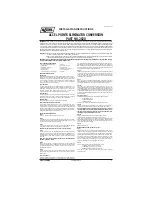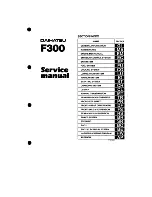
Calculating Load Limits
1. Locate the statement “The combined weight of
occupants and cargo should never exceed XXX kg”
on the “Tire and Loading Information” label.
2. Determine the combined weight of all occupants that
will ride in the vehicle.
3. Subtract the combined weight of the occupants from
XXX kg (see Step 1).
4. The resulting figure equals the available cargo load
capacity. For example, if the “XXX” amount equals
635 kg and there will be five 65 kg passengers in the
vehicle, the amount of available cargo capacity is
310 kg (635 - 325 (5 x 65) = 310 kg).
5. Determine the combined cargo weight being loaded
on the vehicle. That weight must not exceed the
available cargo load capacity calculated in Step 4.
WARNING:
Trunks are the preferred places to
carry objects. In a collision, or during hard braking
and sharp turns, loose items in the cabin could
injure occupants.
Example Load Limit Calculations
How much cargo Model X can carry depends on the
number and weight of passengers. The following
calculated load limit examples assume passengers weigh
65 kg. If passengers weigh more or less, available cargo
weight decreases or increases respectively.
Driver and one passenger
Description
Total
Vehicle capacity weight
433 kg
Subtract occupant weight (2 x 65 kg)
130 kg
Available cargo weight
303 kg
Driver and four passengers
Description
Total
Vehicle capacity weight
433 kg
Description
Total
Subtract occupant weight (5 x 65 kg)
325 kg
Available cargo weight
108 kg
The cargo weight should be distributed between the
front and rear trunks.
CAUTION:
Never load more than 175 lbs (80 kg) on
the rear load floor (above the lower trunk
compartment) or more than 285 lbs (130 kg) in the
lower trunk compartment. Doing so can cause
damage.
Vehicle Loading
198
MODEL X Owner's Manual
















































